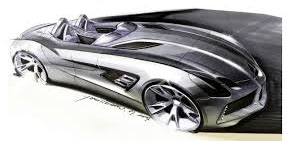5 Potentially Tough Conditions Dealers Will Face In 2015
I’ve been spending the past few days in budget and strategy sessions, planning for 2015.
The work has left me with a pretty clear conclusion: Things aren’t going to get any easier for dealers next year and, in some cases, the challenging horizon may prove too much for those who take too long to adjust to the changing new/used vehicle retail landscape.
This conclusion owes to five conditions that aren’t necessarily new, but they all seem to be gaining in momentum and scope:
Condition 1: Margin Compression. Most forecasters believe 2015 will see e ven more new vehicle sales than the estimated 16.5 million or so units that are expected to be sold in the current year. The forecasters also anticipate that factories will step up incentive spending (which is currently running near levels last seen in 2010) to spur retail demand and sales.
ven more new vehicle sales than the estimated 16.5 million or so units that are expected to be sold in the current year. The forecasters also anticipate that factories will step up incentive spending (which is currently running near levels last seen in 2010) to spur retail demand and sales.
This is not a new phenomenon by any stretch, but dealers would be wise to remember the days of “profitless prosperity” that defined our industry not so long ago, when they were selling cars but making little, if any, money on the actual sale of a new vehicle.
If the more aggressive incentive spending comes to pass, it could also complicate, and potentially compress, used vehicle margins. This will be a bigger concern and risk for dealers who do not attune their used vehicle operations to the market—an operational strategy that helps them ride out the downstream volatility that occurs when factories chase market share with open checkbooks.
Condition 2: Increased Used Vehicle Supplies. The volumes of off-lease and -fleet vehicles are expected to climb higher in 2015 compared to the current year. The good news: Dealers should be accustomed to this trend, given our collective experience during the past year-plus. That said, the anticipated rise in supplies is accompanied by questions about a commiserate rise in retail demand—in fact, some dark-cloud forecasters suggest credit challenges, and less appetite for risk among lenders, will crimp retail sales.
For dealers, these dynamics will mean that doing a “good job” in used vehicles will likely get a bit more difficult. This challenge will be felt less by dealers who, today, consistently make sure that every used vehicle acquisition, reconditioning, merchandising, pricing and desking decision makes sense for the current market and the dealership’s profit and inventory turn objectives.
Condition 3: The Rising Reliance On Fixed Operations For Profitability. In early November, an Automotive News article highlighted dealers who were investing big in their fixed operations. The dealers recognize two important factors: First, they typically make more money in fixed operations than their new/used vehicle departments combined; and, second, they see an opportunity to recapture customers lost to independents and other competitors by providing a more professional, satisfying, seamless and technology-enhanced experience for customers. I might suggest that such efforts send a strong message to dealers more accustomed to treating fixed operations as a “back-end” part of their business.
Condition 4: F&I Regulation. So far, dealers have largely been spared in the efforts by the Consumer Financial Protection Bureau (CFBP) to regulate dealer loan reserves and F&I product mark-ups. But I think it’s fair to say the hand-writing’s on the wall. It’s no secret that, in the face of shorter margins in new and used vehicles, dealers have placed a greater emphasis on making every dollar they can in F&I. The problem is that some dealers now over-rely on F&I income to boost their bottom lines—often because they chose not to make efficiency-minded adjustments in other departments that are necessary to maximize the “total” gross of their dealerships. It is these dealers who will suffer the most if stricter F&I regulations arrive in the coming year.
Condition 5: Increased consolidation, competition. The current year is likely to feature one of the most active buy-sell environments in the history of automotive retail. It’s a trend that analysts expect will continue as growth-minded dealers and investors aim to reap the benefits that come with economies of scale and efficiencies applied across multiple rooftops. Inevitably, this more consolidated retail landscape will increase the level of competition and create additional pressures on less-efficient, often smaller dealers to step up their game or risk finding themselves (and their family fortunes) tied to an operation their factory partners, and the market, no longer deem relevant.
Even with these conditions, I remain buoyant and optimistic that dealers will have a good year in 2015, provided they continually pay attention to improving their performance and take nothing for granted.
